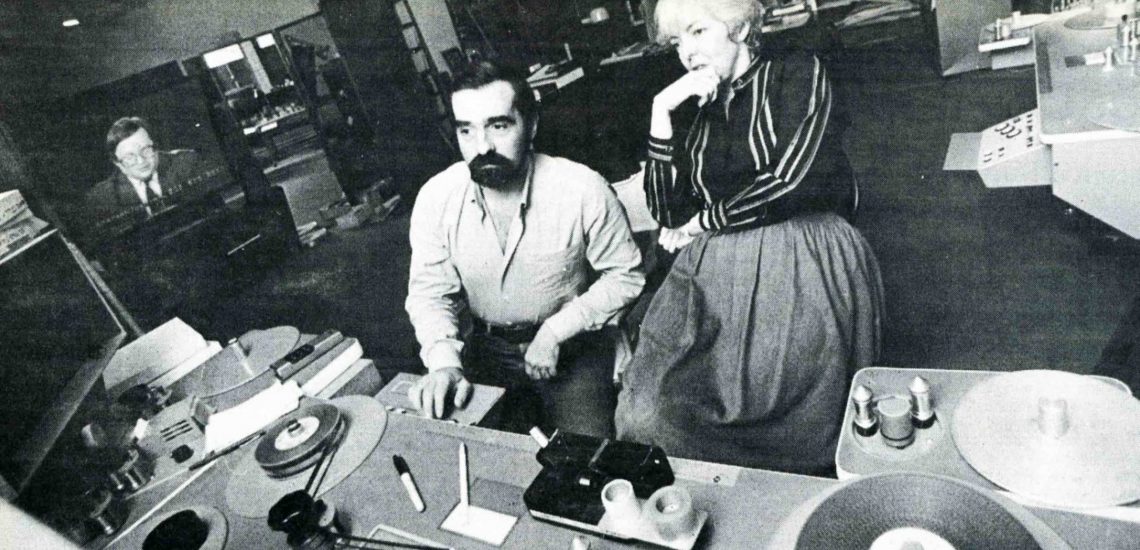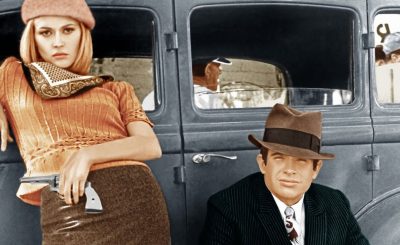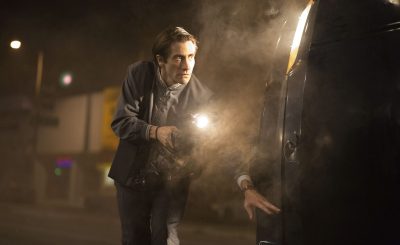3. Evolution: The Film Editor vs. Technology
In any discussion regarding film editing it is pertinent to consider that, of all the various stages of film production, it is post-production that appears to inhabit the most ever-changing landscape. The biggest milestone amongst this evolution is the introduction of digital nonlinear editing; a further reworking of mechanical systems which, in turn, had replaced editing no more advanced than requiring a pair of scissors and a magnifying glass (Murch, 2001, pp. 75-76). With nonlinear systems becoming commonplace amongst professional film editors in the 1990s, the craft became, in essence, redefined. This presents a clear debate; whether the advanced technology available to modern digital editors has given them such power that their role is now more creative and artistic than ever before, or conversely, if the ready availability of such software, its relevant support, and its technical complexity has degenerated the role into that of a skilled technician, thus diminishing its artistic merit.
Sarris’ (2004, p. 562) defining of technical competency as a mark of an auteur rings no truer than in the constantly adapting world of editing. In film’s infancy, the editor’s input into the film could potentially be restricted by the limitations of the equipment that was standardized at the time. In addition, there was also the factor of the production line nature of editing in early filmmaking, in that titles, sound, music, special effects, and cutting were all handled independently (Kauffmann, 2006, p. 2). This, of course, diminishes the credibility of one editor having an overall creative vision. The fact that a digital nonlinear editor can now control all these aspects suggests that this idea has evolved somewhat. The introduction of digital editing would also iron out potential creative roadblocks, clearly present in earlier editing technologies. Kauffmann (2006, pp. 2-3) compares two of these, film and videotape editing, stating:
The main advantage film editing had over video editing was that it was non-linear. You could remove a shot in the middle of the film and put it at the beginning, or vice versa. It took time to do all that unsplicing and splicing of polyester tape, but you could make changes at any time to any part of your film. Videotape editing was always more automated and faster … But, videotape editing was linear – you couldn’t switch shots around as you could with film.
Naturally, different systems require different approaches. Murch (2001, pp. 45-48) compares two mechanical systems; the Moviola, a stand-up nonlinear editing machine, and the flatbed KEM, a more linear editing method. He writes; ‘the Moviola system “emulsifies” the film into little bits (individual shots) and then the editor reassembles it out of those bits, like making something out of clay … with the KEM system … the sculpture is already there, hidden within the stone, and you reveal it by taking away, rather than building it up piece by piece, as you do with clay’ (Murch, 2001, p. 45). Despite the supposed benefits of the nonlinear approach, Murch (2001, p. 46) claims that it makes editing choices ‘only as good as your requests’, and that the linear KEM, in contrast, is ‘constantly presenting things for consideration’. Essentially he claims that the idea of random access comes with the price of potentially overlooking certain aspects of the footage. The counter-argument he presents is that a system that is too linear becomes a burden, resulting in an over-expenditure of time, and tedium (Murch, 2001, p. 48).
Today’s editing software, supposedly, combines the best of both worlds. Systems such as Avid Media Composer provide many automated features with just a single keystroke, ultimately speeding up the editing process by removing the arduous task of physically cutting and moving physical film. This is random access. Whilst flavours of this are also present in videotape and KEM editing, when it is combined with the complete nonlinear control, it presents a hugely powerful tool. Ohanian (1998, p. 19) offers a simple equation for this; ‘Nonlinear + Random Access = Free Form, Free Form = The Way We Think?’ An elaboration on this is that a system, such as Avid, that encompasses both nonlinear editing and the speed of random access can work with an idea much better, encouraging ‘free-form thinking’. Put simply, both videotape editing and film cutting force the editor to think linearly, due to the time and effort involved in making an edit, or equally, in undoing an edit. Digital nonlinear editing removes these problems and allows an idea to be acted upon immediately. Ultimately, this means a lack of patience no longer restricts the editor from experimenting, in depth, with shot order and scene construction. Potentially, this could empower them to the point where their creative influence is felt on the final film like never before – the power all modern editors now harness.
Yet Mel Worsfold, engineer of the Steenbeck flatbed editing system, in an interview with Perkins and Stollery (2004, pp. 160-161), accuses editors using digital nonlinear systems of not taking ‘the audience view’. He compares the process to playing a computer game, with the editor responding instantly to a stimulus on screen, losing the overall effect of all the film’s elements. According to Worsfold, they are ‘too close, [and] too intricate’ (Perkins & Stollery, 2004, p. 161). The supposed result of this new approach to editing, as speculated by Tom Priestly in another Perkins and Stollery (2004, p. 161) interview, is a quickened, impatient pace within many films, and a use of particular cuts, and particular techniques, solely with intention of ‘nudging’ the audience – making sure they are aware of the editor and the cut. This idea of ‘overcutting’, of course, runs contrary to the concept of invisible editing, the technique that cemented editing’s effectiveness in early filmmaking. However, as discussed in chapter one, it can be argued that the two ideas merely operate on opposite ends of a spectrum, and are no less artistically legitimate. Simply, ‘overcutting’ can be interpreted as a distinctive style that separates the work of Eisenstein from the work of Griffith, for example, and underpins editing’s claim for authorship via Sarris’ (2004, p. 562) second criterion.
However, in terms of more films exhibiting a quicker editing pace, post-digital, there is certainly precedent. Bordwell (2007) refers to the film You’ve Got Mail (Ephron, 1998), a remake of Shop around the Corner (Lubitsch, 1940), and how one particular corresponding scene in the two films is edited. The scene in question is where the respective characters in each film first meet face-to-face with the people they’ve been writing to. Whereas Shop around the Corner features a variety of lengthy two-shots, focussing less on the characters’ facial reactions and more on their bodies as a whole, You’ve Got Mail cuts constantly between tight-framed close ups of its two stars, in a shot-reverse-shot style. The clearest indication of how much this has quickened the editing pace is the average shot length. Bordwell (2007) claims that only 14 shot changes occur in this scene in Shop around the Corner, averaging 21 seconds a shot. In comparison, You’ve Got Mail features 84 shots, averaging 4.3 seconds each.
Bordwell (2007) refers to this as ‘intensified continuity’, and speculates how it can be viewed as a reflection of the audience ‘getting dumber’ and needing ‘more emphasis on character action and reaction to follow what’s going on’. Supporting this point, in one interview, editor Richard Best laments this tendency to ‘cut, cut, cut, cut all the pauses, make it go like a bomb’, and argues that ‘that isn’t editing … If you don’t respond to the emotional content … all you’re getting is a fast film’ (Perkins & Stollery, 2004, p. 138). This viewpoint has provoked disagreements, however. In direct opposition to the ‘dumbing down’ argument, editor Geoffrey Foot actually claims that the modern audience is ‘sharper’, and can ‘accept rapid change on screen’ (Perkins & Stollery, 2004, p. 138). This is reflected in the experimentation of young editors in the 1960s, a response to the fractured continuity editing of French New Wave films such as Breathless (Godard, 1959), in which action is cut from a sequence on the assumption that the audience are capable of still following the action as a whole (pp. 138-141). In a sense, it was a rebellion against conventional editing techniques that ultimately conditioned the audience to such alternative film structuring.
Of course, it is important to consider the psychological reasons why an audience is able to follow action on screen in this manner, cutting from shot to shot, and why the technique was not adopted so vigorously as today in classical cinema. In a study into audience attention spans when watching Hollywood films, Cutting, DeLong, and Nothelfer (2010, pp. 6-7) conclude that audiences’ minds wander less when the structuring of shots reflects a 1/f pattern – that being the variation of reaction time performance, or wavering of attention, across a given time period (Cutting, Delong, & Nothelfer, 2010, p. 1). Through studying attention in relation to 150 films released between 1935 and 2005, they determine that, as mind wanderings are caused by additional stimuli competing for resources of attention (Smallwood & Schooler, 2006, cited by Cutting, Delong, & Nothelfer, 2010, pp. 6-7), audiences in fact hold their attention better during the fast-paced cutting films of the post-classical era. In such films, more attentional resources are required to follow the action and the 1/f spectra is followed, albeit as a natural evolution rather than wittingly, by the filmmakers (Cutting, DeLong, & Nothelfer, 2010, pp. 6-7). Essentially, simply through the natural establishment of film form, editors were able to intuitively adhere to this psychological grounding and ‘generate a visual momentum in the viewer’ (Cutting, Delong, & Nothelfer, 2010, p. 7).
The ultimate result of this is that editors began to understand and trust the audience with challenging new editing methods in the post-classical era. They were prepared to break formerly established film ‘rules’, and be individualistic, due to a gradually improving understanding of the audience. Editor William Hornbeck once stated: ‘the tips are not rules. If you had rules for editing, why, you could put it in a book and anyone could become an editor. But you can pass on advice; after that you’ve got to use your own judgement’ (Brownlow, 1968, p. 308). From this idea, techniques would evolve, and continue to evolve, simply through editors going against these ‘tips’ and using their creative license. One of the most well known of these is the axis of action, commonly known as the ‘180 degree rule’. This dictates that an imaginary line is laid out across the set or location, discerning frame left from frame right. The action is subsequently shot exclusively from one side of the line. Crossing this line affects the audience’s perception of spatial relationship on screen, moving characters from screen right to screen left, and vice versa. Fairservice (2001, p. 85) refers to how filmmaking often observes this to be a ‘rigid and inflexible rule’, and how breaking it classes as a ‘heinous sin’.
Despite this, there are several modern examples where the line is crossed, and moreover, even as the 180 degree rule was first being established in early filmmaking, it was still being broken. It is to the credit of the editor that this supposed ‘heinous sin’ developed into an important filmic storytelling technique, a technique that ‘unsettles the sense of reality’ (Fairservice, 2001, p. 88). To this point, Fairservice (2001, p. 90) refers to the film Nosferatu (Marnua, 1922). He discusses how the editing in the film is ‘well paced and taut’, and primarily obeys the 180 degree rule. Ultimately, on occasions when the axis of action line is crossed, this produces a much more dramatic effect, but only as it is paced correctly by the editor. The audience is that much more aware, and subsequently affected, by the cut as they have been subconsciously conditioned to the ‘correct’ method of editing. The reverse of this also seems to apply, as Fairservice (2001, pp. 85-86) dissects Griffith’s The Lonedale Operator (1911), discussing the regularity of its deliberate cross-line cuts, and how this leads to one later edit being particularly noticeable as it happens to actually conform to the 180 degree rule. Both are clear examples of manipulation through editing.
However, the two examples above obviously reflect a very early cinematic audience, where no strict ‘code of practice’ existed within film. As Fairservice (2001, p. 87) states; ‘audiences were not conditioned to expect action to be arranged in any fixed way and were prepared to infer relationships between shots much more readily’. He goes on to speculate how this evolved from generation to generation. Whilst it appeared to be loose and inflexible during the early 1900s, the convention became more rigid as audiences became more cine-literate, more aware, even if only subconsciously, of correct filmic technique. Indeed, he writes that only until 1931 was cross-line editing a common feature of motion pictures (Fairservice, 2001, p. 87).
In the modern generation however, initially through the counterculture period of the 1960s, and particularly with the advent of digital nonlinear editing, a cine-literate audience was combined with an audience more open to alternative editing methods such as the cross-line edit. The audience understood film better, and as deduced from Cutter, DeLong, and Nothelfer’s study, filmmakers understood the audience better. Consequently, what was once a ‘rule not to be broken’, is now an effective technique employed in a number of modern films, key examples of which are Stanley Kubrick’s The Shining (1980) and Full Metal Jacket (1987). Each use the cross-line edit for a distinct reason; in The Shining, to reflect the uneasiness of the conversation between Jack and Grady in the famous bathroom scene, and in Full Metal Jacket, to give Hartman a fear-inducing omnipresence as he abuses his troops in the opening scene.
With both directed by Kubrick, this suggests these cross-line edits were a directorial decision as opposed to an editorial one, however it is important to remember the technique’s origin in the edit room, suggesting editors influencing directors just as much as vice versa. Despite this, it is not always the case that editors deliberately set out to break such rules for effect. Often it comes from personal prioritisation of all the factors for consideration before making a particular cut. The greatest example of this, again, is Walter Murch. In his book In the Blink of an Eye, Murch (2001, pp. 18-19) specifies six criteria for making a cut;
An ideal cut (for me) is the one that satisfies all the following six criteria at once: [emotion, story, rhythm, eye-trace, two-dimensional plane of screen, and three-dimensional space of action] … Emotion, at the top of the list, is the thing that you should try to preserve at all costs. If you find you have to sacrifice certain of those six things to make a cut, sacrifice your way up, item by item, from the bottom.
The last two items on the list, ‘two-dimensional plane of screen’ and ‘three-dimensional space of action’, refer specifically to conventions such as the 180 degree rule, techniques put in place to define and redefine the location of characters and objects on screen, providing the audience with some special awareness. The fact that Murch has ranked these below all other factors with a combined importance factor, according to his scale, of nine percent, compared to the fifty-one percent issued to the factor of emotion, speaks measures for the editor’s artistry over technicality. That this has remained constant in Murch’s eyes throughout several stages of technical evolution only goes to further cement this idea.
Whereas the bottom three factors refer mainly to technical competence, the top three are clearly shared with other artistic mediums such as fiction writing and music, and are certainly consistent with theorists have defined as an auteur. Murch (2001, p. 19) writes; ‘the general principle seems to be that satisfying the criteria of items higher on the list tends to obscure problems with items lower on the list, but not vice-versa’. Even with the evolution of the cine-literate audience, the creative side of editing still seems to overawe the technicalities, and moreover Murch’s criteria further establish an individual style and approach, in keeping with Sarris’ understanding of the auteur theory.
With regards to how this stance may have changed alongside the evolution of technology, Murch affirms that across a variety of editing methods, he sees no difference in his style; ‘I was curious to see if there was a difference between my mechanical and electronic styles. There wasn’t – in fact I was struck by how immediate the earlier films seemed. I would make the same editorial choices today’ (Ondaatje, 2002, p. 32). Murch is certainly an authority on the subject of the evolution of editing practices, having utilised such a variety of systems. He was constantly in search of the perfect one for the editorial style of the film he was currently working on; ‘immediately responsive to creative ideas without the process itself getting in the way’ (Koppelman, 2005, pp. 52-53). This would ultimately lead the editor to Avid in the 1990s. Though initially priced $80,000 to $100,000 and providing ‘spotty technical support and resisting innovation and input from filmmakers’ (Koppelman, 2005, p. 54), Murch would continue to be open to alternatives that would support his artistic style. This would lead to Apple’s $995 Final Cut Pro software becoming his chosen method for the editing of Cold Mountain (Minghella, 2003), a notable milestone in the evolution of the practice, as outlined by Koppelman (2005, p. 59):
Hobbyists, students, and filmmaker wannabes love it because it’s cheap and easy to learn. For a film editor of Murch’s stature to consider using FCP on a big movie could presage the long-predicted convergence of consumer-level digital video tools and the Hollywood film industy.
Indeed, the lowering costs of camera and editing equipment ‘revealed that the entire country was taping and editing everything that moved’ (Browne, 2002, p. 9). The popularity of YouTube, Apple computers, and Final Cut Pro, further evolved the amateur editor. Browne (2002, p. 197) states that they ‘bring new ideas and fresh concepts’, but the traps they tend to fall into are numerous; overcutting, underuse of sound, overuse of effects, and so on (Browne, 2002, pp. 197-202), emphasising the importance of Murch’s six criteria. Whilst on many occasions these errors simply point to a lack of experience, it could also be argued that they lack Murch’s intuition, his natural artistry. Ondaatje (2002, p. xxi) refers to Murch as a ‘master editor’, and speaks of how he controls the audience with every cut. That Murch can still be able to achieve this using low-end consumer software in the editing of a major motion picture helps outlines the unmistakeable gulf between a metteur en scène, and a hommes de cinéma.
In the case of editing, this gulf underlines that atop a foundation of technical knowledge that can be taught, needs to lay a unique creativity, and an acute perception of human emotion to gain that ‘ideal cut’. The constantly evolving editing world has not reduced Murch to simply a ‘glorified technician’. His techniques and mastery of the craft have not relented. Technology has evolved, the audience has evolved, and techniques have evolved – but not to the point of degrading the artistic importance of editing. At the very least, it has been shown that there are advantages and disadvantages, in terms of artistry, to each technological stage of editing. However, Murch’s case study, spanning both linear and nonlinear periods, clearly emphasises the role as a whole as being predominantly creative. This in itself is a huge point for dislodging the idea of the director as the one true film auteur, in favour, at least, of an equal collaboration between him and the editor.






Leave A Reply